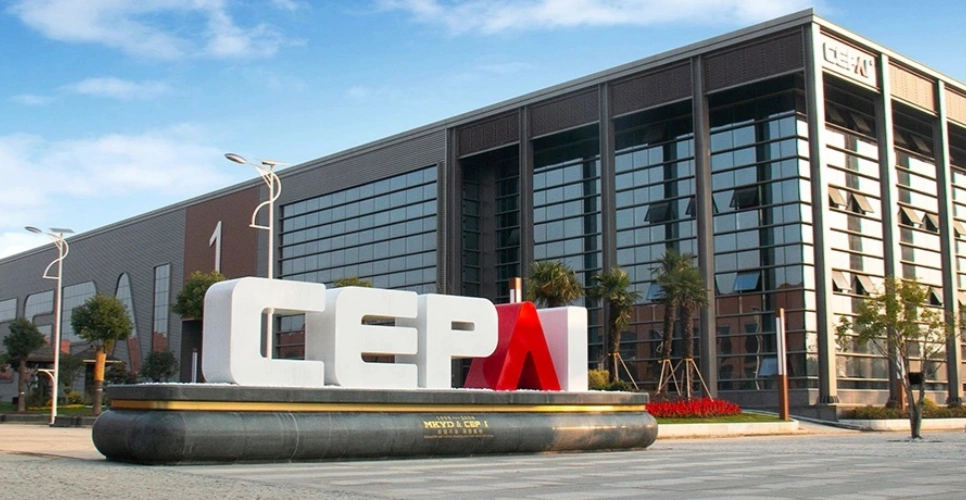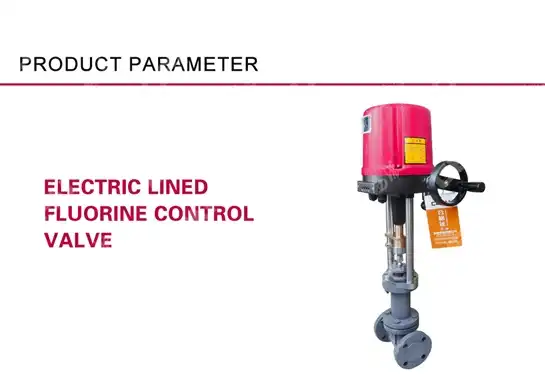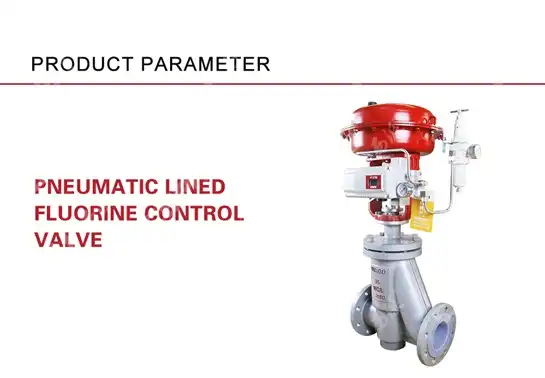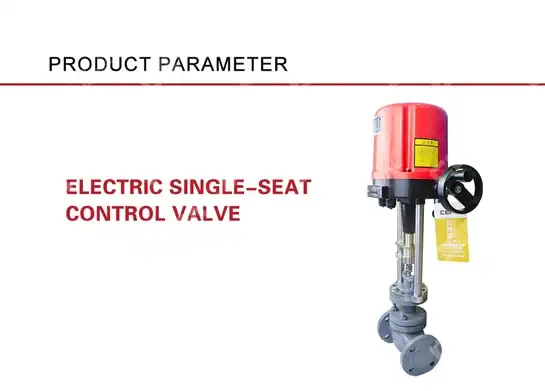The Technology Behind Reliable Low-Temperature Control Valve Actuation
In extreme industrial environments where temperatures plummet below -60°C, process engineers face a critical challenge: maintaining precise control over fluid flows while equipment components are subjected to thermal stress that can cause catastrophic system failures. The technology behind reliable low-temperature control valve actuation represents the difference between seamless operations and costly downtime in petrochemical, LNG, and cryogenic applications. Low-Temperature Control Valve systems must overcome material brittleness, thermal expansion issues, and actuator responsiveness challenges to ensure consistent performance when conventional valves would simply fail.
Understanding Low-Temperature Control Valve Technology Fundamentals
-
Core Design Principles for Extreme Cold Applications
The foundation of reliable low-temperature control valve actuation lies in understanding how extreme cold affects every component within the valve assembly. When conventional valves encounter temperatures ranging from -60°C to -196°C, standard materials become brittle, seals fail, and actuator mechanisms freeze or respond sluggishly. Low-Temperature Control Valve technology addresses these challenges through specialized materials selection, enhanced thermal management, and precision engineering that maintains operational integrity under the most demanding conditions. Modern Low-Temperature Control Valve designs incorporate extended bonnet configurations that physically isolate the packing and actuator components from the extreme cold of the process media. This thermal barrier approach ensures that critical moving parts remain within their optimal operating temperature ranges while the valve body handles the cryogenic conditions. The technology employs materials such as stainless steel grades 304, 316, and 316L, along with specialized coatings and treatments that maintain their mechanical properties even at cryogenic temperatures. The actuator technology integrated with Low-Temperature Control Valve systems utilizes advanced electric mechanisms capable of delivering consistent torque and positioning accuracy regardless of ambient temperature fluctuations. These electric actuators feature enhanced weatherproofing, internal heating elements, and robust gear trains specifically engineered to function reliably in harsh environmental conditions where pneumatic systems might suffer from air line freezing or hydraulic systems could experience fluid thickening.

-
Material Science Innovations in Cryogenic Applications
The selection of appropriate materials forms the cornerstone of reliable Low-Temperature Control Valve performance. Traditional carbon steel valve bodies give way to specialized alloys that maintain their toughness and ductility at cryogenic temperatures. Austenitic stainless steels, particularly grades CF8, CF8M, and their wrought equivalents 304 and 316, demonstrate excellent low-temperature properties while providing the corrosion resistance necessary for handling various process media including gases, water, and oil. Seal and packing materials undergo rigorous testing and selection processes to ensure they remain flexible and provide effective sealing at low temperatures. Flexible graphite and PTFE-based packing systems are specifically chosen for their ability to maintain sealing integrity while accommodating thermal cycling that occurs during startup, shutdown, and normal operation. These materials resist becoming brittle or losing their sealing properties even when subjected to repeated temperature variations from ambient conditions down to -196°C. The valve trim components, including the spool and seat assemblies, utilize pressure-balanced designs that compensate for thermal expansion and contraction effects. Advanced manufacturing techniques ensure precise dimensional control and surface finishes that maintain their sealing characteristics throughout the valve's operating life. Surface treatments and specialized coatings further enhance wear resistance and prevent galling between mating surfaces, ensuring smooth operation and extended service life.
Electric Actuation Systems for Low-Temperature Control Valve Applications
-
Advanced Electric Actuator Technology
Electric actuators represent the most reliable and precise method for operating Low-Temperature Control Valve systems in extreme environments. Unlike pneumatic or hydraulic alternatives that can suffer from freezing or viscosity changes, electric actuators maintain consistent performance regardless of ambient temperature conditions. Modern electric actuators designed for Low-Temperature Control Valve applications feature robust construction with enhanced environmental protection ratings, internal heating systems, and specialized lubricants that remain effective at cryogenic temperatures. The control systems integrated with these electric actuators provide exceptional precision in valve positioning, typically offering accuracy within 0.1% of full stroke. This level of precision is crucial for Low-Temperature Control Valve applications where minor adjustments can significantly impact process conditions. The actuators respond to standard 4-20mA DC control signals, allowing seamless integration with existing control systems while providing optional feedback signals for position verification and system monitoring. Power requirements for electric Low-Temperature Control Valve actuators are typically standardized at 220V or 380V AC supply with frequencies of 50Hz or 60Hz, ensuring compatibility with global electrical systems. The actuators feature multiple fail-safe options including spring return mechanisms and battery backup systems that ensure the valve moves to a predetermined safe position in the event of power failure, protecting both personnel and equipment from potentially hazardous conditions.
-
Control Signal Processing and System Integration
The sophisticated control systems managing Low-Temperature Control Valve operations utilize advanced signal processing algorithms that compensate for the unique characteristics of cryogenic applications. These systems monitor not only the primary control signal but also ambient temperature, valve position, and actuator torque to ensure optimal performance under varying conditions. The integration of smart actuator technology enables predictive maintenance capabilities, alerting operators to potential issues before they result in valve failure or process disruption. Communication protocols incorporated in modern Low-Temperature Control Valve systems support both analog and digital interfaces, including fieldbus technologies that enable comprehensive system diagnostics and remote monitoring capabilities. This connectivity allows operators to monitor valve performance, adjust control parameters, and receive real-time status updates from central control rooms, reducing the need for personnel exposure to hazardous low-temperature environments. The fail-safe mechanisms integrated into electric actuator systems provide multiple layers of protection for Low-Temperature Control Valve applications. Primary fail-safe systems utilize spring-return mechanisms that automatically position the valve to a predetermined safe state upon loss of power or control signal. Secondary systems include manual override capabilities that allow operators to manually position the valve using handwheel mechanisms when automatic control is unavailable, ensuring continued process safety and control even under emergency conditions.
Pressure Balance Technology and Flow Characteristics
-
Precision Flow Control in Extreme Conditions
The heart of Low-Temperature Control Valve technology lies in its ability to maintain precise flow control despite the challenging conditions imposed by cryogenic applications. Pressure-balanced spool designs form the foundation of this capability, utilizing sophisticated valve trim configurations that automatically compensate for varying upstream and downstream pressures. This technology ensures that the actuator force requirements remain consistent throughout the valve's operating range, enabling precise control even when handling high-pressure differentials commonly encountered in cryogenic systems. Flow characterization in Low-Temperature Control Valve applications typically utilizes either equal percentage or linear characteristics, depending on the specific process requirements. Equal percentage characteristics provide excellent control at low flow rates while maintaining stability at higher flows, making them ideal for applications where wide rangeability is required. Linear characteristics offer proportional response between valve position and flow rate, providing intuitive control behavior that simplifies operator training and system tuning. The valve body designs incorporate advanced computational fluid dynamics principles to minimize pressure drops, reduce cavitation potential, and ensure smooth flow transitions that prevent erosion and extend valve life. Cage-type trim designs provide multiple flow paths that distribute the pressure drop across several stages, reducing the velocity of the fluid as it passes through the valve and minimizing the potential for cavitation damage that could compromise long-term reliability.
-
Thermal Management and Expansion Compensation
Effective thermal management represents one of the most critical aspects of Low-Temperature Control Valve technology. Extended bonnet designs create a thermal barrier between the extremely cold process media and the actuator components, allowing the use of standard actuator technologies while protecting them from the detrimental effects of cryogenic temperatures. These extended bonnets incorporate specialized insulation materials and may include active heating elements to maintain optimal temperatures in critical areas. Thermal expansion compensation mechanisms built into Low-Temperature Control Valve designs accommodate the significant dimensional changes that occur when valve components are subjected to extreme temperature variations. Flexible connections, expansion joints, and carefully calculated clearances ensure that thermal cycling does not bind valve components or create excessive stress that could lead to premature failure. Spring-loaded packing arrangements automatically adjust to accommodate thermal expansion while maintaining effective sealing. The valve body materials and heat treatment processes are specifically selected to maintain their mechanical properties throughout the expected temperature range. Stress relief processes and controlled cooling rates during manufacturing ensure that residual stresses do not contribute to brittle failure modes when the valve is subjected to cryogenic conditions. Quality control procedures include low-temperature impact testing to verify that materials maintain adequate toughness at operating temperatures.
Quality Assurance and Performance Validation

-
Comprehensive Testing Protocols
The reliability of Low-Temperature Control Valve systems depends on rigorous testing protocols that validate performance under actual operating conditions. Cryogenic testing facilities subject complete valve assemblies to temperature cycling tests that simulate real-world operating conditions, including rapid temperature changes that might occur during emergency shutdown procedures. These tests verify that all valve components maintain their functionality and sealing integrity throughout the expected temperature range. Pressure testing protocols for Low-Temperature Control Valve applications exceed standard requirements, incorporating both hydrostatic and pneumatic tests at cryogenic temperatures. Seat leakage testing performed at low temperatures ensures that sealing performance meets or exceeds ANSI B16.104 Class IV standards for metal seats and Class VI standards for soft-seated configurations. Extended duration testing validates long-term performance and identifies potential wear or degradation mechanisms that might compromise valve reliability. Actuator performance validation includes torque testing at various temperatures to ensure that the electric drive systems can provide adequate force to operate the valve throughout its entire operating range. Control response testing validates that the actuator can accurately position the valve in response to control signals, with particular attention to response times and positioning accuracy at low temperatures where component stiffness might affect performance.
-
Manufacturing Excellence and Quality Control
The manufacturing processes for Low-Temperature Control Valve systems incorporate advanced quality control measures that ensure consistent product performance and reliability. Precision machining operations utilize computer-controlled equipment to maintain tight dimensional tolerances critical for proper sealing and smooth operation. Surface finish requirements are rigorously controlled to ensure optimal sealing performance and prevent galling between mating surfaces. Material traceability systems track every component from raw material receipt through final assembly, ensuring that all materials meet the specified requirements for low-temperature service. Heat treatment processes are carefully monitored and documented to verify that materials achieve the required mechanical properties and microstructure for cryogenic applications. Non-destructive testing methods including ultrasonic inspection and magnetic particle testing verify the integrity of critical components. Assembly procedures follow documented work instructions that specify torque values, assembly sequences, and quality checkpoints to ensure consistent product quality. Final testing of each Low-Temperature Control Valve assembly includes functional testing of all components, verification of control system operation, and documentation of performance parameters that can be referenced for future maintenance and troubleshooting activities.
Conclusion
The technology behind reliable Low-Temperature Control Valve actuation represents a sophisticated integration of materials science, precision engineering, and advanced control systems designed to overcome the unique challenges of cryogenic applications. Through careful attention to thermal management, pressure balance technology, and comprehensive quality assurance protocols, modern Low-Temperature Control Valve systems deliver the reliability and performance required for critical industrial processes operating in extreme temperature environments.
Cooperate with CEPAI Group Co., LTD.
As a leading China Low-Temperature Control Valve manufacturer and China Low-Temperature Control Valve supplier, CEPAI Group Co., LTD. combines advanced technology with exceptional quality to deliver reliable solutions for your most demanding applications. Established in 2009 with 200 million yuan registered capital, our 56,000 square meter facility serves as a national high-tech enterprise specializing in wellhead devices, pipeline valves, and regulating valves for oil and gas industries.
Our Low-Temperature Control Valve for sale features cutting-edge electric actuation technology, precision-engineered valve bodies, and comprehensive quality assurance that meets international standards including API, ISO, and CE certifications. As your trusted China Low-Temperature Control Valve factory, we provide competitive Low-Temperature Control Valve price options while maintaining the High Quality Low-Temperature Control Valve standards your operations demand.
Partner with CEPAI for China Low-Temperature Control Valve wholesale solutions backed by our Jiangsu Provincial Technology Center, CNAS laboratory, and comprehensive after-sales support. Contact our technical team at cepai@cepai.com to discuss your specific requirements and discover how our Low-Temperature Control Valve technology can enhance your process reliability and operational efficiency.
References
1. Smith, J.R., and Johnson, M.K. "Cryogenic Valve Technology: Materials and Design Considerations for Low-Temperature Service." ASME Journal of Pressure Vessel Technology, American Society of Mechanical Engineers.
2. Anderson, P.L., Chen, W., and Rodriguez, A. "Electric Actuator Performance in Extreme Temperature Environments." ISA Transactions, International Society of Automation.
3. Thompson, R.S., and Williams, D.J. "Pressure-Balanced Control Valve Design for Cryogenic Applications." Valve World Magazine, KCI Publishing.
4. Brown, M.E., Davis, K.L., and Lee, S.H. "Quality Assurance Protocols for Low-Temperature Industrial Valve Systems." American Society for Testing and Materials Standards Manual, ASTM International.
_1745994790767.webp)
Get professional pre-sales technical consultation and valve selection services, customized solution services.

About CEPAI


